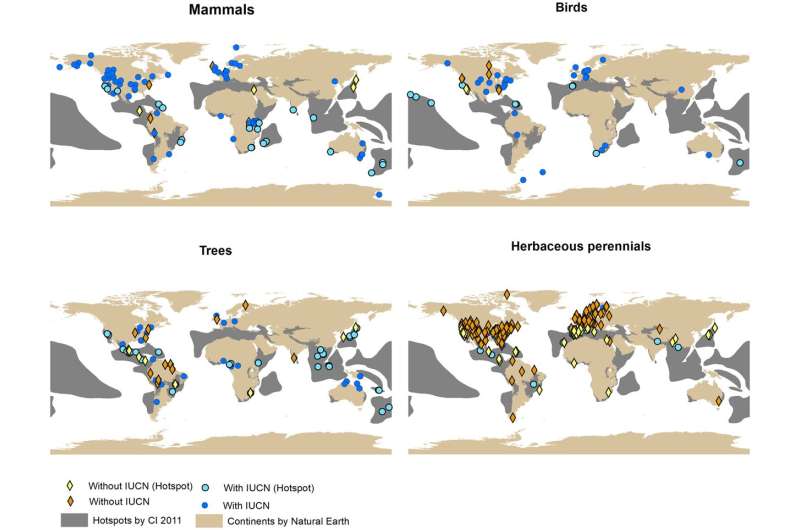March 11, 2022 report
Traits that many species facing extinction have in common

A trio of researchers with the Alexander Center for Applied Population Biology, Lincoln Park Zoo, has discovered some of the traits that many species of plants and animals facing extinction have in common. In their paper posted on the open access site PLOS ONE, Haydée Hernández-Yáñez, Su Yeon Kim and Judy Che-Castaldo, describe their analyses of data from two large, open online repositories—one for plants, the other for animals—and what they learned about the traits that put them more at risk of disappearing.
Prior research has shown that the main contributor to plant and animal extinction today is human activity—whether it's people killing them outright, taking away their habitats or warming the planet, human activities have become the dominant form of extinction. In this new effort, the researchers wondered if there were characteristics about plants or animals that made them more vulnerable to human-made changes. To find out, they accessed the COMPADRE plant matrix database and the COMADRE animal matrix database. Both are open online repositories where researchers around the world add demographic information about plants and animals across the globe. They found information describing IUCN status, phylogeny and demographic rates for 159 species of trees, herbaceous plants, birds and mammals.
The researchers looked for patterns or commonalities among species that might make them more vulnerable to extinction and found different patterns among different types of species. As one example, they found that herbaceous perennials are more vulnerable if they mature early and also have high survival rates as juveniles. They also found that for birds, in general, those with higher progressive growth and reproduction rates are more vulnerable—a finding that they deemed quite surprising, as it appears to go against logic. They also found that for mammals, longer generational times make it more difficult to overcome changes to an environment—those species that take a long time to mature and reproduce are more likely to perish.
The researchers conclude by suggesting that a better understanding of the factors that put plants or animals at risk of disappearing could help with preservation efforts.
More information: Haydée Hernández-Yáñez et al, Demographic and life history traits explain patterns in species vulnerability to extinction, PLOS ONE (2022). DOI: 10.1371/journal.pone.0263504
Journal information: PLoS ONE
© 2022 Science X Network



















